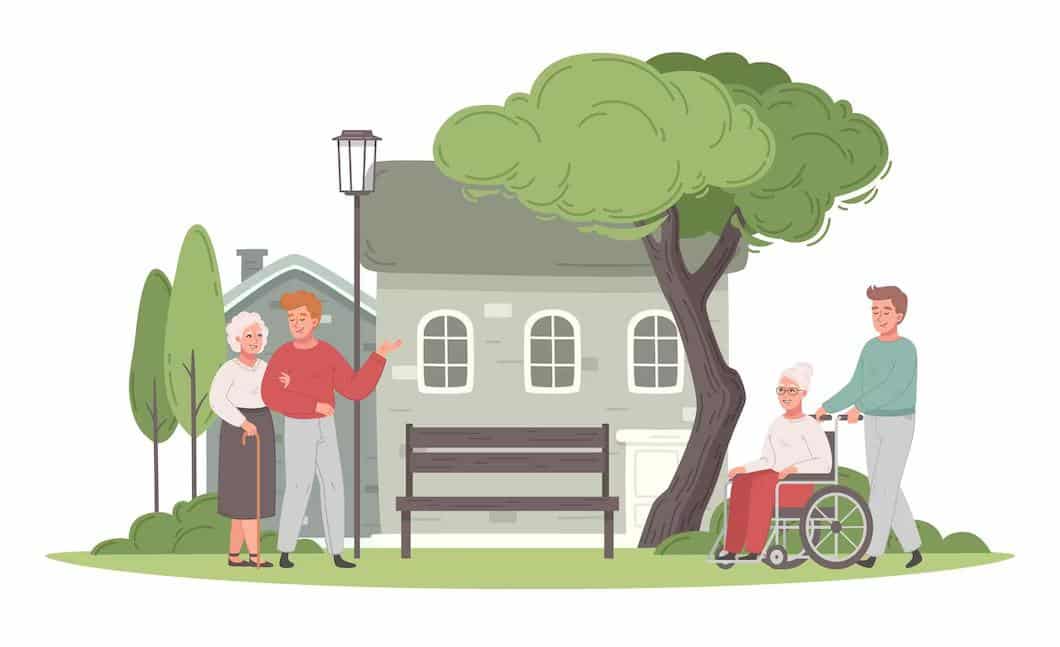Assisted Living to a Nursing Home: A Compassionate Shift
Making the shift from assisted living to a nursing home is a significant decision, often prompted by changes in health or care requirements. For many families, it brings both emotional challenges and a deep desire to find the best path forward. While assisted living offers helpful support with daily activities, some individuals eventually need more advanced, round-the-clock medical attention. Understanding this transition, recognizing the signs, and choosing the right facility are crucial for ensuring your loved one receives the care they deserve. If you or someone you love is navigating this journey, know that there are compassionate and professional resources ready to help every step of the way. Every move element can be managed with care and respect, from emotional support to physical care and attention. This guide explores what to expect and how to prepare for this next chapter in care.
Recognizing When to Move From Assisted Living to Nursing Home
Understanding when to move from assisted living to nursing home care depends on several health and lifestyle factors. If your loved one is experiencing frequent falls, memory issues, or can no longer manage medication safely, it may be time to consider more intensive care. A nursing home provides skilled medical attention and 24/7 support for individuals with complex needs. These signs often become more noticeable over time, making it essential to monitor daily behaviors and consult with healthcare professionals for a proper assessment. This decision, though difficult, ensures safety, comfort, and quality of life as needs evolve.
Criteria for Assisted Living vs Nursing Home
Clarifying the criteria for assisted living vs nursing home helps families choose the right environment. Assisted living is best for those who need help with some daily activities but are generally independent. In contrast, nursing homes are designed for people who require regular medical care, such as those with chronic conditions or recovering from surgery. A medical evaluation can determine eligibility and guide the decision. Families often benefit from exploring care checklists or speaking with placement professionals to match the level of care with the resident’s needs.
Understanding Medicaid and Care Options
Navigating assisted living vs nursing home Medicaid benefits is crucial when planning financially. Medicaid coverage varies by state and often includes long-term nursing home care, but may offer limited support for assisted living. In Michigan, for example, Medicaid may help with specific programs in certified facilities. This makes understanding your state’s coverage and eligibility requirements a vital part of the planning process. For detailed information about Michigan Medicaid for seniors, visit Michigan.gov’s Medicaid Services.
Who Qualifies for Assisted Living or Nursing Care?
If you ask who qualifies for assisted living, the answer varies based on physical and cognitive ability. Individuals who can still participate in daily tasks with minimal help may qualify for assisted living. However, if there are severe health issues, memory loss, or frequent hospitalizations, nursing home care is often more appropriate. Healthcare providers usually assess eligibility through interviews and evaluations. Discussing your options with medical staff can clarify which care level is suitable.
Finding Nursing Homes Near Lapeer, MI
Families looking for nursing homes near Lapeer, MI, have several options. ShadowTree Lodge, for instance, offers a welcoming environment with specialized care services tailored to each resident. With experienced staff and a commitment to compassionate care, ShadowTree Lodge is known for helping residents feel at home during this transition. You can explore their care programs and amenities by visiting their official website.
Supportive Transition from Assisted Living to a Nursing Home
Managing the transition from assisted living to a nursing home involves collaboration between the current care team and the future care team. Start by discussing your plans with staff at the assisted living facility. They can help with paperwork, transfer logistics, and continuity of care. Then, coordinate with the nursing home’s staff to develop a personalized care plan tailored to your loved one’s evolving health conditions. Providing reassurance and involving the resident in decision-making can help reduce anxiety. Facilities like ShadowTree Lodge focus on comfort and emotional well-being, ensuring your loved one feels valued and respected.
Emotional Well-Being and Family Support
Making this move is not just about physical care—emotional health matters too. Change can be difficult, and it’s common for both residents and family members to feel anxious or unsure. Staying connected through regular visits, calls, and shared activities can make the transition feel less overwhelming. Many families find that once a new routine is established, their loved ones thrive in the new setting with more tailored support. For tips on handling the emotional side of care transitions, visit Caregiver.org for guidance.
ShadowTree Lodge: Personalized, Compassionate Care
At ShadowTree Lodge, we understand the complexities of transitioning to a new care environment. Our staff is trained to deliver customized plans that address medical, emotional, and daily living needs. The warm, inviting setting helps residents feel secure, and families can trust in the professionalism of our caregivers. With ongoing communication and dedicated services, we ensure no one feels alone during this time.
Whether you’re early in your search or ready to take the next step, ShadowTree Lodge welcomes the opportunity to support you.
Schedule a Tour Today
To learn more about transitioning from assisted living to a nursing home and how ShadowTree Lodge can support your family, schedule a tour or call us at 810-660-7525. We’re here to answer questions, offer guidance, and help you feel confident in your care decisions.
Frequently Asked Questions
When should someone go from assisted living to a nursing home?
A move from assisted living to a nursing home is usually considered when a person’s medical or personal care needs exceed what assisted living can provide. This includes needing 24-hour supervision, help with most daily activities, or complex medical care. Family members and healthcare professionals often work together to assess whether a higher level of care is needed. A nursing home may offer more consistent medical support for those with chronic or worsening conditions.
What is the difference between a nursing home and an assisted living?
Assisted living is designed for older adults who need help with daily activities but still want to maintain independence. Services often include meals, housekeeping, and basic personal care. In contrast, nursing homes provide round-the-clock medical care and supervision for individuals with more serious health conditions. The environment in a nursing home is more clinical, while assisted living focuses more on comfort and independence.
How to admit an elderly person to a nursing home?
Admitting an elderly person to a nursing home starts with assessing their health and care needs, often done by a physician or care coordinator. Once a suitable facility is identified, paperwork such as medical records, financial information, and consent forms must be completed. It’s helpful to tour facilities, ask questions, and involve the senior in the decision when possible. Once admitted, the nursing home staff will create a care plan tailored to the resident’s needs.
Does Medicare pay for nursing home or assisted living?
Medicare does not typically cover the cost of long-term stays in assisted living or nursing homes. However, it may pay for short-term skilled nursing care after a hospital stay, up to a certain number of days. Individuals usually rely on Medicaid, long-term care insurance, or private pay for long-term care. It’s important to check individual eligibility and plan coverage for the most accurate information.





